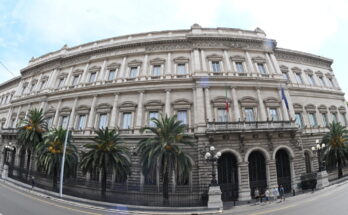The Federal Reserve drives a car in the fog while children argue in the back seat. This is the image that emerges when reading the minutes of the last meeting of the body responsible for deciding on the direction of monetary policy. The reviews confirm the deep division within the institution. During that meeting, the Fed lowered interest rates by a quarter point for the second time in a row. In the subsequent press conference, the organization’s president, Jerome Powell, used the following simile to leave the door open for a pause in the race to lower the price of money: “What do they do if they drive in the fog? You slow down.”
The minutes reveal that one board member, Stephen Miran, voted in favor of a more aggressive cut, by half a point. And another councilman, Jeffrey R. Schmid, voted not to change the rates. Two such contrasting votes have not been seen since 2019. These are new times for the body responsible for deciding the price of money based on two forces: inflation and job creation. Earlier this year, the Fed experienced its first split in more than three decades, with the filing of a no vote.
The minutes confirm the division felt within the Fed following the appointment of Stephen Miran as a member of the organization’s board of directors. Miran was an economic adviser to US President Donald Trump, who launched a crude campaign of harassment against Powell. Last Tuesday, without going further, when reporters asked him about the Fed, he said, “I’d like to get that man out of there right now, but there are people stopping me.” During the meeting with the crown prince of Saudi Arabia, Mohammed Bin Salman, the republican president once again insulted the current president of the Fed, whom he himself appointed in 2017: “He is a madman, a stupid man”.
The minutes, as minutes of meetings held by Fed members are popularly known, show the deep division. They allude to the “divergences” and different “visions” of the members of the Federal Open Market Committee (FOMC), the Federal Reserve body that decides on rates.
“Participants expressed different opinions on the degree of restriction of the current position,” the minutes read. And they anticipate a change of strategy to face the next meetings: “When the evolution of short-term monetary policy was discussed, the participants expressed very divergent opinions on the most appropriate decision for the December Committee meeting.”
The truth is that the latest meeting of American governors has opened the door to a pause in rate cuts. Before the Oct. 29 meeting, investors were betting there was a greater than 95% chance the Fed would lower rates again at its next meeting in December, according to CME Group’s FedWacht indicator. After the meeting the options were reduced by half. And this Wednesday, when the Fed minutes are released, the odds that investors give of another reduction in the price of money within two weeks are reduced to 29%.
“Many participants agreed that the Committee should act with caution in its upcoming monetary policy decisions, given the context of these dual risks and the reduced availability of key economic data,” the minutes underline, elaborating on the idea of a pause in December after cuts in July and September. “The majority noted that, in an environment of high inflation and a very gradual slowdown in labor market conditions, further reductions in the monetary policy rate could increase the risk of inflation taking hold or could be misinterpreted as a lack of commitment by monetary policymakers to the 2% inflation target.”



